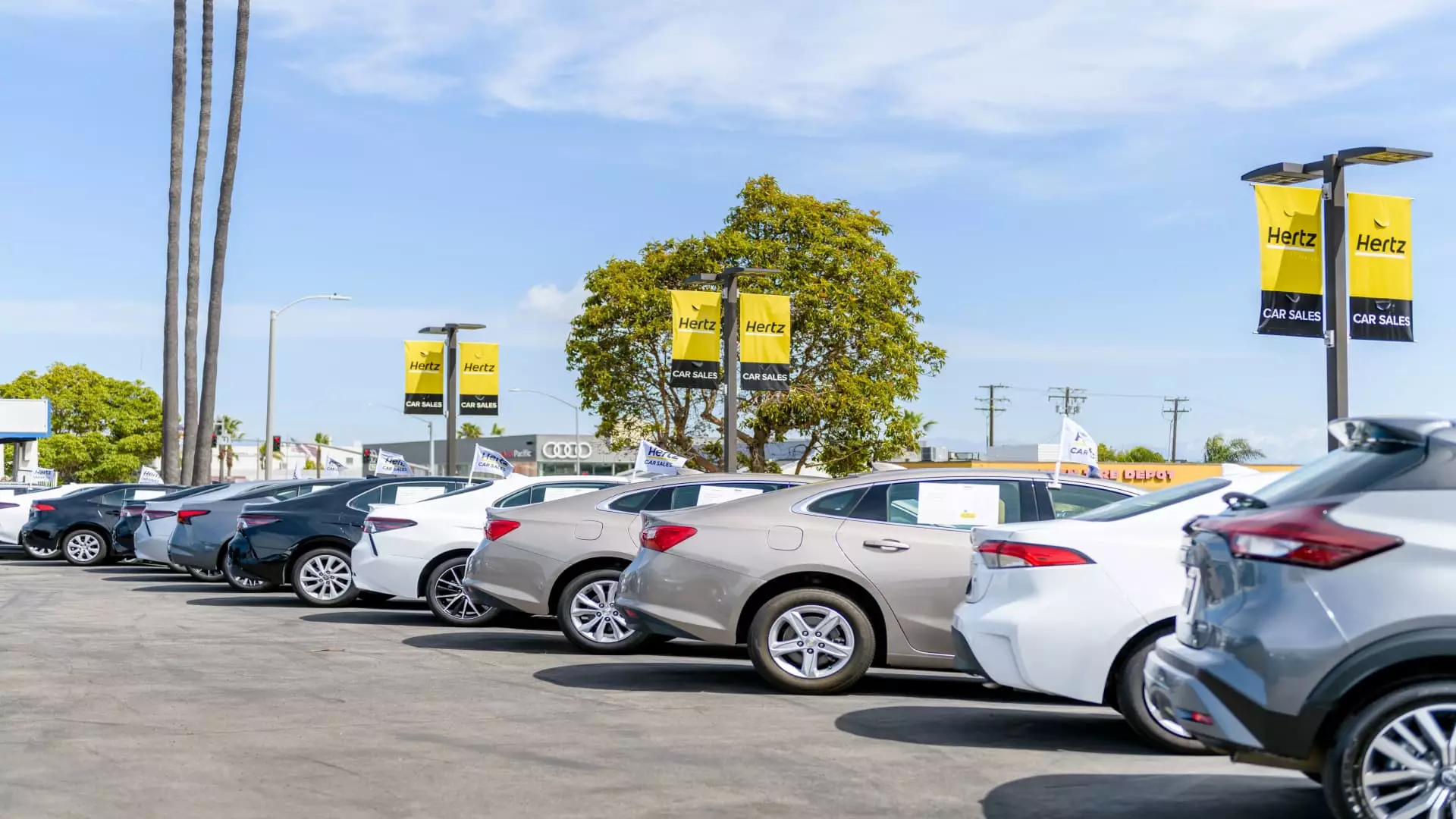In an era where many traditional businesses struggle to adapt amidst relentless digital disruption, Hertz’s latest move into online used car sales via Amazon Autos exemplifies both boldness and hubris. While the rental giant proclaims this as a strategic leap toward convenience and scale, beneath the surface lies an industry fraught with pitfalls that may ultimately undermine Hertz’s long-term vitality. Their partnership signals a desire to modernize, but it also hints at deeper issues—namely the challenge of reconciling a rental-focused legacy with a retail-focused future, all while navigating the volatile terrain of online automotive commerce.
Rather than a genuine revolution, this initiative feels more like a gamble—an effort to cling to relevance at a moment when the core rental business is still recovering from pandemic scars and shifting consumer preferences. Hertz’s entry into Amazon Autos, though seemingly promising, aligns more closely with a desperation to generate quick revenue than with a coherent vision for sustainable growth. As they seek to boost visibility and profits from used vehicle sales, one must question whether this approach addresses the fundamental flaws of their broader operational model or merely masks them temporarily.
The Illusion of Control in a Digital Marketplace
Hertz’s partnership with Amazon Autos offers the allure of a seamless shopping experience—customers can browse, purchase, and pick up vehicles without leaving their homes. However, this convenience comes at the cost of control and quality assurance. The used car market, historically fraught with unpredictability, fraudulent listings, and inconsistent vehicle quality, is no place for superficial digital expansion. Hertz’s strategy assumes that broadening access to their inventory online will convert to sustained profit. Yet, it overlooks the fact that automotive sales are complex, high-value transactions that demand credibility, trusted verification, and a strong service infrastructure—areas where traditional, localized dealerships excel far more than large online platforms.
Expanding their digital footprint might bring temporary euphoria, but without rigorous oversight, Hertz risks diluting its brand appeal. The trustworthiness built over years via physical inspections and in-person dealings cannot be replicated overnight through indelible online listings. This raises critical questions: can Hertz truly control the user experience when it’s increasingly reliant on third-party digital platforms? Or are they merely riding a trend that favors convenience over substance, leaving both reputation and profitability vulnerable?
The Risks of Overdependence on Tech Giants
Aligning with Amazon—a behemoth whose core competency is logistics and consumer data—places Hertz in a precarious position. While the partnership promises to expand their reach, it also makes Hertz susceptible to shifts in Amazon’s strategic priorities. Amazon’s automotive ambitions remain nascent and unproven at the scale necessary to sustain Hertz’s retail ambitions. Relying heavily on a platform designed for mass consumer goods, rather than specialized vehicle sales, risks commodifying Hertz’s inventory and reducing their cars to just another item on Amazon’s endless catalog.
Moreover, this reliance could accelerate the marginalization of independent dealerships and local service providers, who traditionally serve as trusted intermediaries in automotive transactions. As more consumers turn to online giants for purchases, the unique value proposition of personalized dealership experiences diminishes further. Far from empowering customers with better options, Hertz’s strategy might inadvertently erode the personalized service quality that underpins brand loyalty in the automotive industry.
The Underlying Flaws of Hertz’s Broader Strategy
Hertz, after its dramatic brush with bankruptcy and an indecisive electric vehicle strategy, is still searching for a viable path forward. Their forays into digital retail and used vehicle sales seem more like patchworks rather than parts of a cohesive systemic overhaul. The “Back-to-Basics Roadmap” suggests a recognition that operational fundamentals—fleet management, efficiency, and revenue optimization—are critical, yet the company doubles down on expansive retail and online ambitions that may divert focus from these essentials.
The real challenge lies in transforming from a rental-centric service to a holistic mobility provider, capable of competing with innovative newcomers like Tesla and Rivian, or redefining their niche in a shrinking rental market. Their recent push into used vehicle sales and digital presence may yield short-term gains, but it ignores the deeper structural issues—a fragmented fleet, inconsistent customer experiences, and a loss of identity—that could threaten their survival if not addressed holistically.
A Center-Right Perspective: Embracing Market Realities, But Caution Is Key
From a pragmatic, center-right liberal perspective, Hertz’s approach reveals a commendable willingness to adapt, yet also exposes fundamental misgivings about overreach. The free-market principle suggests that competition, innovation, and consumer choice are vital. However, prioritizing online expansion at the expense of core service quality and operational stability risks accelerating bankruptcy. The company should focus on sharpening its fleet management, improving customer service, and developing trustworthy branding before venturing into untested digital territories.
While embracing new technologies and partnerships is necessary, these should serve as complements—not substitutes—for fundamental business health. The focus must remain on building a resilient, efficient core to withstand shifting demographics and economic fluctuations. Otherwise, Hertz risks becoming a fleeting case of digital overconfidence—where the veneer of innovation masks a fragile underlying structure destined to falter under competitive pressure or internal mismanagement.

